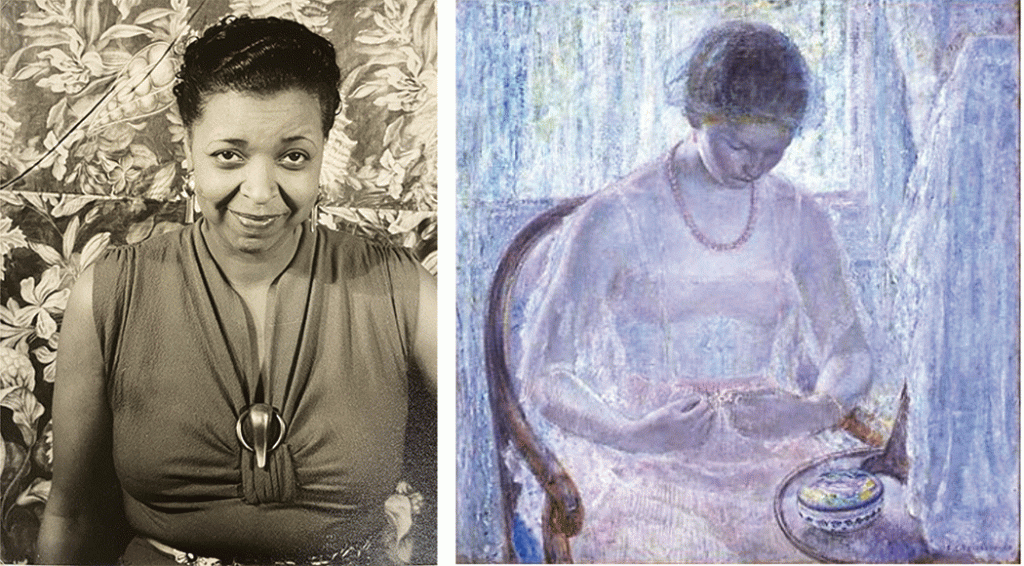
The Cedar Rapids Museum of Art has mounted two exciting new exhibitions for the summer. And what’s more perfect on a hot summer day than an air-conditioned art museum? All that Jazz: Photographs by Carl Van Vechten and George T. Henry provides a visual feast for music and photography lovers, while Strokes of Genius: American Impressionism and its Legacy introduces visitors to homegrown artists who made important contributions to the Impressionist movement.
Photographs of Jazz Artists
All that Jazz pulls together photographs of jazz musicians taken by Cedar Rapids natives Carl Van Vechten and George T. Henry. Created in recognition of the 50th anniversary of Iowa’s only jazz station, KCCK-FM, this phenomenal collection of photographs runs through August 31 and celebrates our regional connection to jazz.
“All That Jazz allows the viewer to consider how jazz greats presented themselves both on stage and in a more intimate photography studio setting,” says Curator of Collections and Exhibitions Julia Jessen. “It also shows how two photographers represented these public and private personas through their own artistic lens.” Jessen adds that the exhibition includes a QR code to a playlist of music from these musicians to augment the experience of viewing the photographs.
“Cedar Rapids has many connections to jazz music,” Jessen explains. In addition to being the home of KCCK, “it has produced and hosted many jazz musicians over the years, and Cedar Rapids is the hometown of two photographers who captured jazz greats in their work.”
Carl Van Vechten and George T. Henry had very different styles. This exhibition highlights their work as well as their differing approaches.
Van Vechten moved to New York City in 1906, where he became a widely recognized music and dance critic who wrote about the Black artists he met in Harlem. His photographs are portraits of his famous friends and acquaintances, such as accomplished jazz chanteuse and actress Ethel Waters. George T. Henry, on the other hand, remained based in Cedar Rapids. Working as Coe College’s visual historian, he captured kinetic moments—such as iconic jazz trumpeter Louis Armstrong mid-performance—on film.
“With completely different visions, two artists from Cedar Rapids left a lasting impression on the history of jazz,” says Executive Director Sean Ulmer. “Working in New York, Carl Van Vechten captured many of the jazz greats of the Harlem Renaissance with his camera. In Cedar Rapids, George T. Henry did the same, only later. While the former approached his subjects in a more formal portrait format, the latter caught the jazz performers performing. When taken in combination, these two artists succeeded in capturing the key players who defined jazz music in the 20th century.”
Impressionist Paintings
Strokes of Genius: American Impressionism and its Legacy runs through September 14. Impressionism, which focused on capturing light and atmospheric conditions using loose brush strokes, was the predominant artistic style in the U.S. when the Cedar Rapids Museum of Art originated in 1895. Strokes of Genius looks at the unique American re-interpretation of Impressionism through works from the museum collection, and illustrates how these American Impressionists continue to inspire contemporary artists today.
“This exhibition explores the movement at the height of its popularity, but also considers its long-ranging impact on artists into the present day,” Jessen says. “Despite many of these works being created over a century ago, they maintain a captivating presence that is as striking today as it was in the early 20th century.”
While everyone is familiar with French artist Claude Monet (1840–1926), who founded Impressionism with Pierre-Auguste Renoir, Camille Pissarro, and Alfred Sisley, many people do not realize that Impressionism became a world-wide phenomenon, influencing artists everywhere.
“American Impressionism took the hallmarks of the style that originated in France, but applied them to American settings and tailored them for an American audience,” Jessen says. “Their work marks an important moment in American art history, and the exhibition also explores how their impact can still be felt through the work of painterly artists today.”
The exhibition includes work from both well-known and lesser-known artists, including Frederick Carl Frieseke (1874–1939) and Grant Wood (1891–1941). Frieseke moved to France in 1888 and was an influential member of the American Impressionist art colony at Giverny. Wood’s early work was influenced by Impressionism. After spending time in Paris and studying at the Académie Julian in the early 1920s, Wood painted in an Impressionistic style until he was introduced to the German and Flemish Old Masters, which led him to become a key exponent of American Realism. The exhibition also includes work by contemporary artists influenced by Impressionism.
“Jessen broadens the discussion to include artists working today whose style is reminiscent of Impressionism,” Ulmer says. “Juxtaposing works from the early 20th century with some from the early 21st century creates new dialogues between works, expanding the visitor’s experience.”
Jessen maintains that even viewers who are familiar with Impressionism will make new discoveries, “whether it’s an artist they weren’t previously familiar with or an interesting connection between artists of the past and the present.”
For more information, visit CRMA.org.
